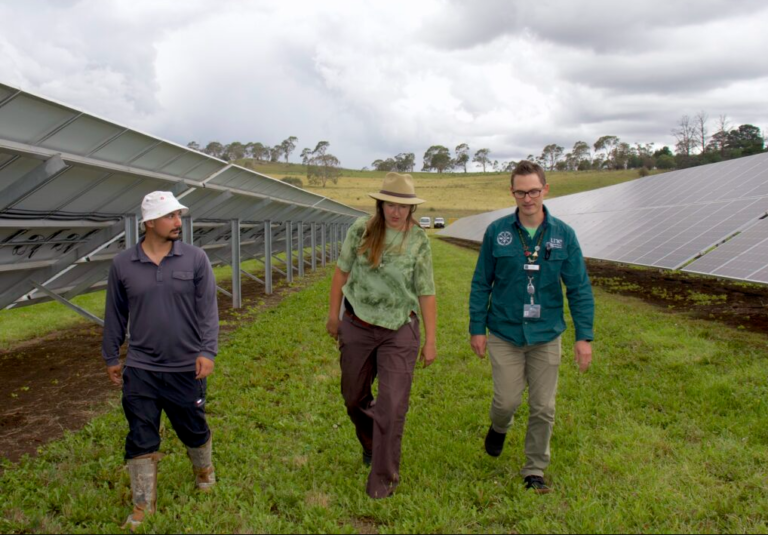An Australian community group has launched a new guide to help solar developers improve biodiversity at project sites and build trust in neighboring communities without compromising PV generation capacity.
The Community Power Agency said its new guide provides strategies and practical methods for developers of large-scale PV projects so they can address land use conflicts and adopt regenerative agriculture techniques, including ‘conservatives’ and ‘agrivoltaics’.
The group in New South Wales said this Guide to building better biodiversity on solar farms will help solar projects meet new and emerging drivers for improved environmental performance and management of the sites they lease or acquire.
“We know from projects being developed in Asia, Europethe US and now emerging in Australia, that conservation and agriculture do not have to come second to renewable energy,” says guide co-author Heidi McElnea, Community Power Agency regional coordinator.
The guide calls on developers, landowners and consultants to adopt a conservation approach, combining conservation and solar energy systems, to leave the natural environment at solar project sites in a measurably better condition.
Eric Nordbert, a University of New England wildlife ecologist who contributed to the guide, said solar farms can improve biodiversity, similar to artificial reefs in aquatic ecosystems.
“They create structural complexity in the environment and provide shelter and habitat for wildlife,” he said. “Solar panels provide spots of sun and shade.”
Nordbert said conservatives and agrivoltaic energy are emerging as effective strategies to maximize land sharing between industries.
“Conservovoltaic and regenerative systems provide additional benefits to solar farms by reducing solar panel degradation, ambient temperature and dust accumulation, while providing habitat for native wildlife,” he said. “Studies in Europe and the US have shown that solar farms with native vegetation and wildflowers under the panels support more biodiversity than fields that serve both native plant communities and adjacent agricultural activities through greater numbers of bees, butterflies and other pollinators.”
The guide says solar farms can benefit from ecosystem services provided by a conservation approach, including the reduction of heat and dust, which negatively affect the efficiency of PV panels, along with erosion prevention, which can damage infrastructure.
If hosting solar energy infrastructure is to be combined with grazing, strategic planning must begin early to determine how to make the most of this joint land use.
Guide co-author David Carr, the founder and director of environmental services specialist Stringybark Ecological, said that by integrating biodiversity considerations from the start, solar developers and landowners can reap significant benefits.
“This includes minimizing negative impacts, promoting local biodiversity and working with neighboring communities to strengthen local biodiversity,” he said.
The guide suggests that such an approach could also streamline the approval process by exceeding current regulatory requirements, while building constructive relationships with host communities and improving conflicts over land use.
The guide focuses on the New England Tablelands region of northern New South Wales, but Carr said its principles will be broadly applicable.
“We hope this guide will also provide a basis for action for other regions where extensive solar panels and other infrastructure are being planned and developed,” he said.
The Building Better Biodiversity on Solar Farms Guide has been funded by the Foundation for Rural & Regional Renewal and will be launched in partnership with Glen Innes Natural Resources Advisory Committee and Southern New England Landcare.
This content is copyrighted and may not be reused. If you would like to collaborate with us and reuse some of our content, please contact: editors@pv-magazine.com.


